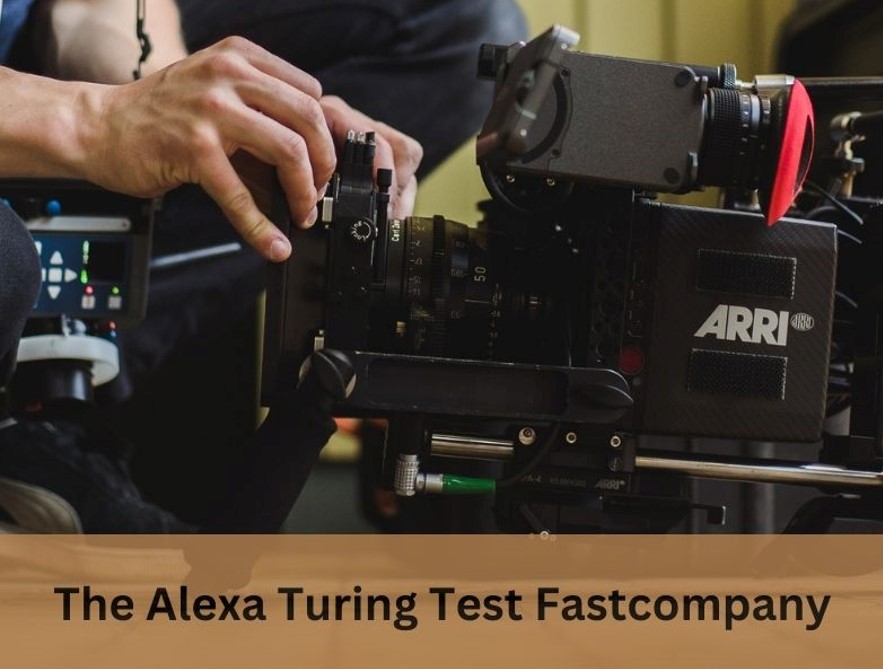More than 70 years ago, computer scientist Alan Turing introduced a test to determine if a machine can exhibit conversational behavior indistinguishable from a human. Now, Amazon’s head scientist of Alexa is arguing that the test is outdated and should be retired.
Prasad argues that as AI becomes more integrated into our everyday lives, people care less about being able to tell the difference between a machine and a human, and more about interacting with machines in a seamless way.
What is the Turing Test?
The alexa turing test fastcompany is a way for a human to determine whether or not a machine can think like a human. The test was first proposed by Alan Turing in his 1950 paper “Computing Machinery and Intelligence”.
The test is used to assess a computer’s ability to think in the same manner as humans. It requires that the machine be able to answer questions and execute all of human behaviours, including the ability to make mistakes and be deceptive.
It also tests for behaviours that might not be considered intelligent, such as the tendency to lie or a high rate of typing errors. The test can be adapted to incorporate more modern approaches and maintain its relevance in the ever-evolving world of technology.
Many variations of the Turing Test exist and are continuously being developed to better detect both humans and machines. These include the Reverse Turing Test, the Marcus Test and Lovelace Test 2.0 to name a few.
One of the most famous versions is Turing’s imitation game, which involves three people and one computer in a controlled environment. The person interrogating the computer is isolated from the other two participants, who are performing the roles of a female and a male. The goal is to trick the person into believing that the computer is a human.
Another version of the Turing Test was introduced by John Searle in his book The Chinese Room, which uses a similar setup but with different rules. The first person is a computer, the second person is a human, and the third person is a judge who tries to decide which player is a human.
These types of tests can be quite difficult to pass. However, there are several AI programs that have been able to pass the test in the past. For instance, OpenAI’s GPT-3 was able to fool a majority of judges in the Loebner Prize in 1991.
Despite this, many critics of the test claim that it does not adequately reflect today’s technologies and is therefore outdated. Some argue that it does not consider the abilities of AI to lookup information and carry out lightning fast computations. Others suggest that it doesn’t take into account the fact that AIs are now integrated into every facet of our lives.
What is Amazon’s Alexa Prize?
Amazon’s Alexa Prize challenges students from around the world to build a “social bot” that can converse intelligently with Alexa about popular topics and news events. They are given a $250,000 research grant, Alexa-enabled devices and tools, data and support from Amazon’s team.
The prize launched in 2016 with the goal of advancing conversational artificial intelligence technologies. It is a competition for undergraduate, graduate and doctoral students.
Teams have to develop a social bot that can interact fluently with people about topics such as entertainment, sports, politics, technology and fashion using Alexa-enabled devices. In the final round, they have to create a conversation that lasts at least 20 minutes and receive an average rating of 4.0/5.0 from the judges.
Developing an intelligent assistant is critical for Amazon, as voice-controlled digital assistance is the most receptive and convenient form of interaction between humans and the company’s products. It also helps the company capture valuable data on customers and improve their experience with the company’s products.
But creating a smart assistant that is more engaging to consumers could be a challenge, especially as consumers are increasingly concerned with their personal data privacy. This is why Amazon has invested heavily in voice-based assistants, and why it has launched its own prize for those attempting to make them more useful.
This year, eight teams are competing for the Alexa Prize. Each received a $250,000 research grant, free cloud computing and Alexa-enabled devices to complete their work.
To test the bots, users interacted with them by simply saying, “Alexa, let’s chat.” These conversations prompted the bots to respond and were then evaluated. The audio from these interactions is not shared with the competing schools, and Alexa customers are able to delete any of their conversations once they want.
The UW’s Sounding Board, a bot that asks users for their favorite songs and shares lyrics, was one of 12 selected to move on to the semifinal round. It was created by a team of students from the Electrical Engineering and Computer Science departments and a team led by Allen School Professors Yejin Choi and Mari Ostendorf.
What is the Turing Test’s Limitations?
The alexa turing test fastcompany is one of the most famous and well-known ways to test if a machine can think. The test was designed by Alan Turing in 1950 to answer the question, “Can machines think?”
While the Turing Test is not perfect, it still provides a powerful tool for testing machines. It can be used to measure the abilities of a computer in a wide range of subjects and allows for a variety of ways to evaluate a machine.
However, many have questioned the Turing Test since its conception. Critics of the test have raised a variety of concerns, from philosophical dilemmas about whether or not it demonstrates emergent properties like consciousness to practical issues such as the lack of a general definition of intelligence that can be applied to machines.
In particular, some have criticized the test for not being adequate to assess a computer’s abilities in natural language. This is because different computing systems may not be structured the same way, which could limit a machine’s ability to understand language and respond appropriately.
Some have also argued that a computer’s ability to pass a Turing test is limited by its subject-matter competence. This is a problem because it can be difficult to determine if a machine has human-like intelligence when its responses are biased or unintelligible.
For example, a computer program such as ELIZA may be able to pass a Turing Test by examining user comments for keywords and manipulating these to create meaningful answers. In addition, this type of program may be able to replicate the behavior of a psychiatrist by pretending to be a paranoid schizophrenic.
The most common criticism of the Turing Test is that it only tests for a narrow field of knowledge. This means that it cannot distinguish a machine’s thinking from that of a human because a human judge may not know the subject matter of the conversation assigned to their terminal.
This is a major flaw in the test, and one that makes it impossible to determine if a machine’s thinking can be distinguished from that of a human. A more effective solution would be to create a reverse Turing test where the objective is reversed. This version would allow the judge to determine whether or not a machine is capable of thinking by assessing its level of intelligence in a different field.
What is the Turing Test’s Future?
As technological advances accelerate, it is important to consider what artificial intelligence means and how that will be measured. The Turing Test is one of the most popular methods for assessing the intelligence of computers. It’s a deceptively simple test that measures a machine’s ability to fool a human into believing it is actually a human.
Although the Turing Test is not without its limitations, it has been used successfully by many AI programs and can be a powerful indicator of a computer’s intelligence. However, its future remains unclear as it is a product of its time.
There are a number of challenges to the Turing Test that need to be addressed. The first is that the test only tests for verbal linguistic behavior, which is not an entire list of cognitive faculties. This is problematic because it focuses only on one modality of intelligent behavior, which may reduce the role of other faculties.
Another problem with the Turing Test is that it doesn’t evaluate the ability of a machine to respond in a non-verbal manner, such as facial expressions. This is important because facial expressions are often more indicative of a human’s thoughts and feelings than other aspects of a person’s behavior.
In addition, the Turing Test is based on one single sensory channel and does not allow for other inputs. This is a problem because as artificial intelligence becomes more sophisticated, it will require more than just written communication to be considered intelligent.
A more accurate assessment of a machine’s intelligence could be done by examining its ability to solve complex problems and find answers to questions. This would be a more holistic approach to AI than the Turing Test, which only assesses the ability of a machine to imitate humans.
The Turing Test’s future is a matter of debate and a number of variations to the test have been proposed. Some of these variations are more applicable to current understandings of AI, while others are designed to measure a machine’s intelligence in areas such as social skills or even creativity.
Also Read: Which One of The Following is Not a Network Topology ?











